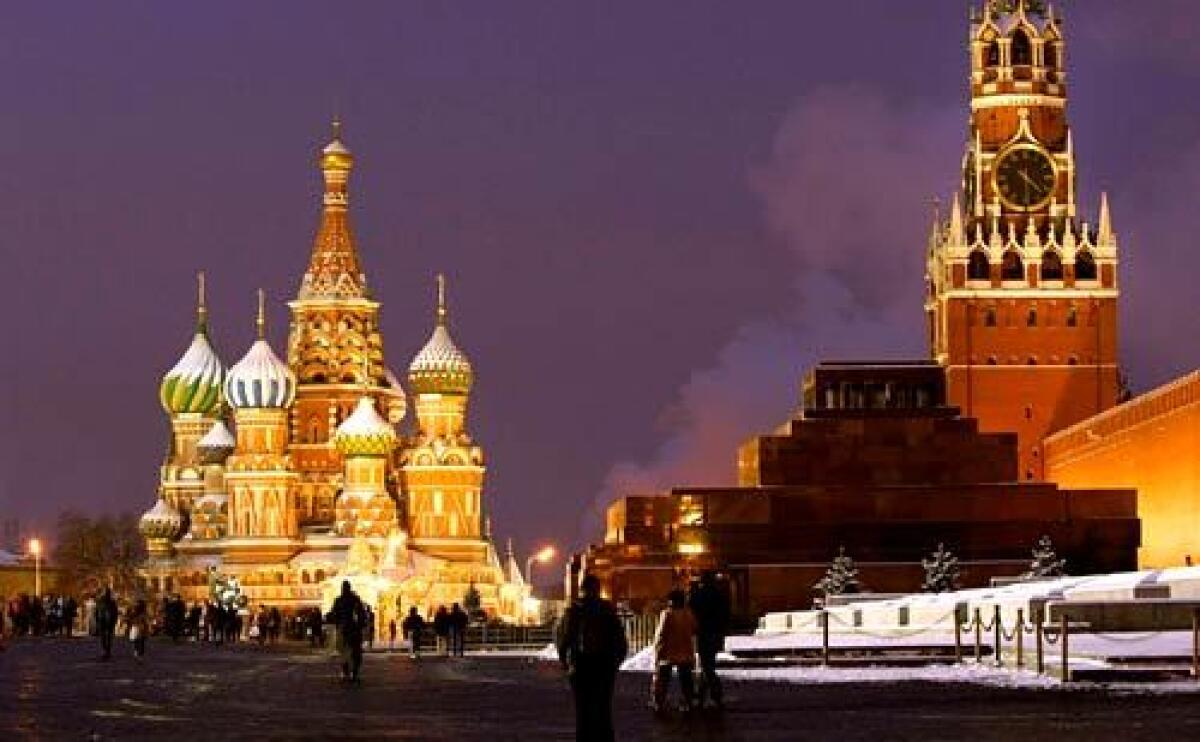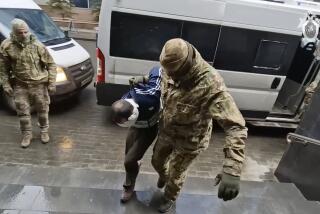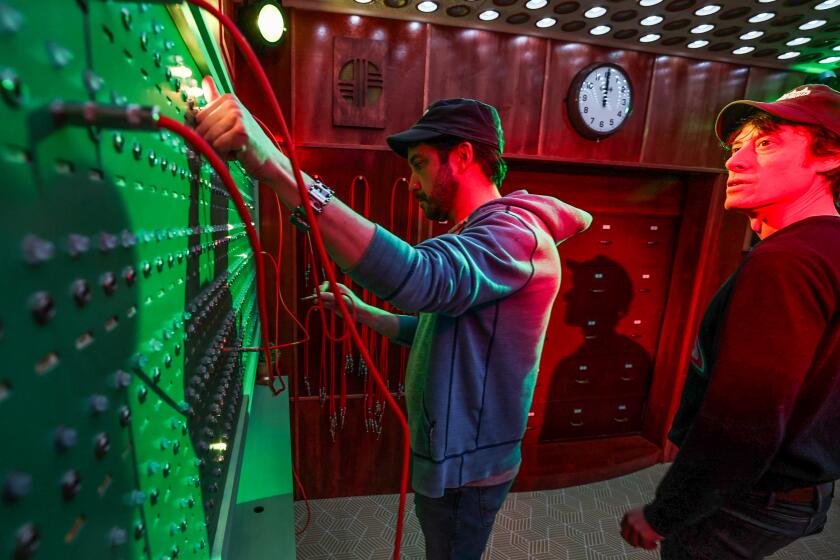Moscow on the cheap

Boasting posh restaurants, luxury boutiques and a flock of millionaires who indulge in them, Moscow is considered one of the most expensive cities on the planet. Just take a walk through the rows of tinted Range Rovers and Bentleys parked behind the Bolshoi Theatre and you’ll understand why this is the city that hosts the conspicuously named Millionaire Fair.
Yet behind this facade live most of Moscow’s 10.5 million inhabitants -- the IKEA-shopping, subway-traveling middle-class residents who like indie theaters and smoky, underground cafes.
As a proud member of this class and a former resident of the Russian capital, on a recent trip back to the motherland I set my entertainment budget at $20 a day and not a ruble more. In the three weeks I spent here, I never found the budget limiting. With all its parks, churches, galleries and art cafes, Moscow offers plenty of entertainment that’s both affordable and a great way to experience life in this heaving city.
For getting around to my favorite spots, I relied on the Moscow Metro. I love the Metro for its unique smell of chalk, which reminds me of childhood and abundant opportunities to people-watch -- couples making out on the escalator or old ticket guards pursuing students who hop over turnstiles.
The Metro also serves as a great shelter from the varied Russian weather; it’s cool on hot summer days, warm on freezing winter nights and dry during torrential spring thunderstorms.
But the Metro, which opened in 1935, is also a major cultural attraction that tourists often ignore. Many of the central stations sport neoclassical architecture, sculptures of Soviet soldiers, mosaics and Art Deco chandeliers.
Muscovites spend a lot of time in the Metro and seem to perceive the city as a giant map with red, orange and green train lines traversing the blue zigzag of the Moscow River. Restaurant addresses usually include the nearest Metro station, and meetings as varied as business encounters and romantic dates are scheduled right on the platforms.
My first order of business after catching up on sleep after a long transatlantic flight was to take the Metro’s green line to Tsaritsyno station, on the southern outskirts of Moscow where I grew up. I wanted to see the newly restored Tsaritsyno Park, which in the old days was a neighborhood park meant mostly for local families coming to ski the small slopes, feed the squirrels, go boating and climb the brick ruins of an 18th century palace.
But since the Gothic palace, commissioned by Catherine the Great and left unfinished after her death in 1796, was restored two years ago, Tsaritsyno has become a popular destination for Muscovites looking for a refuge from the hum of the city.
I hardly recognized the park, with its new gilded gate, musical fountain and the restored palace, which now houses a museum, where for a $3 admission, visitors can see Russian artifacts.
Moscow abounds with parks, but for a nature spot closer to the city center, I especially like Patriarshy Pond. Surrounded by tree-shaded benches and sculptures, the pond is in a quiet square right off the 10-lane Sadovoe Koltso, which reminds one why Moscow, when not plagued by traffic, was once called the Third Rome.
The pond, which doubles as an ice rink in the winter, was popularized by writer Mikhail Bulgakov, whose 1930s novel, “The Master and Margarita,” wasn’t published in the Soviet Union until the ‘60s. Literary clubs often host Bulgakov events and tours around the Patriarshy neighborhood, but I like coming here for the white swan couple that lives in a small hut on the water.
This neighborhood is also a major destination for theatergoers and music lovers, housing several popular theaters and concert halls, clustered around the Mayakovskaya Metro station.
During my visit, the Satire Theater was showing Neil Simon’s “California Suite,” three short comedies set in a Los Angeles hotel and performed by two well-known Russian actors. Given the California theme, I simply had to go. To my surprise, the ticket was easy to get and cost only $15. I enjoyed both the show and the intermission, during which everyone rushed to the theater café for some red caviar sandwiches and cognac.
About 20 minutes from Patriarshy is Chaikhona No. 1, an Uzbek tea house set in a small park, Hermitage Garden, near another pond that also doubles as a popular ice rink in the winter. My friends chose Chaikhona for its outside seating, delicious and reasonably priced Uzbek pilaf, an expansive tea selection and milk-based hookahs. Although the giant knit portrait of Vladimir Putin inside the restaurant was not on the list of pluses, I still found it amusing.
On the way, we ran into hundreds of young men on a military exercise and a lively marching band concert. But at Chaikhona, it was all calm, so we sat through the sunset and into the night blowing sugary hookah smoke into the warm air and reminiscing about the past.
For a more active night on the town, I found Moscow offered plenty of variety -- in the last few years, the city has experienced a cultural revival that has brought in many new galleries, music clubs and performance centers.
With them have come the young intelligentsia, whose presence is helping transform nocturnal Moscow into a safer place for locals and tourists alike.
Many of these spaces combine several forms of entertainment under one roof, an unusual mixing and mashing that’s become fashionable in the last few years.
For example, Project O.G.I., in the basement of a quiet courtyard building in the trendy Chistye Prudy neighborhood, is simultaneously a club, bookstore and restaurant. It’s a favorite among those who appreciate affordable Russian food, live bands and a selection of the latest novels by Haruki Murakami and Viktor Pelevin.
Project Fabrika is a cultural hybrid on a bigger scale. This recently opened center in the northeastern part of Moscow includes several exhibition halls and a performance space, whose schedule shows the diversity of its audiences. For less than $15, you can choose from international DJ festivals, video installations or animation weekends for children.
For contemporary Russian art, I like Winzavod, converted from an old wine factory. This 200,000-square-foot art complex behind the Kursky train station includes contemporary art and photo galleries, artist studios, a stylist school, an art store, a café and a bookstore.
Of a dozen galleries at Winzavod, I especially liked FotoLoft, which puts on conceptual photo exhibits, and M&U Gelman, one of the more famous galleries in Russia, known for its provocative taste. In keeping with international tradition, admission to Winzavod and its galleries is free.
To me, the hybrid cultural centers and the newly launched Moscow Biennale art festival speak to the city’s ambition to reinvent itself as an international cultural hub. But as the Soviet era retreats deeper into the past, the city is also beginning to embrace Russian traditions and the stereotypes that often accompany them. In the last decade, the Moscow government has restored many Orthodox churches that were destroyed or used for secular purposes during the Soviet era. Although some, such as the Cathedral of Christ the Savior on the Moscow River, are destinations of their own, I came across many smaller onion-domed jewels just by walking around the city.
Returning from lunch near Tretyakovskaya station, home to the famed Tretyakovskaya Gallery, I stumbled upon a gorgeous black and white monastery. Although I couldn’t go in because it was closed, I enjoyed taking pictures of the empty church courtyards.
Moscow also abounds in other uniquely Russian leisure options. One of the most unusual is the Fishing Village, an entertainment complex near the VDNH Metro station with a restaurant, pool, sauna, paint ball games and a year-round “guaranteed fishing” pond where locals come to catch giant sturgeon and have them prepared on the spot. In the winter, the Fishing Village offers the unique (and, I imagine, rather strenuous) experience of ice fishing.
For Muscovites, the Fishing Village is a place for parties and weekend getaways. I came here with a wedding party for what Russians call a “second-day celebration.” We simply rented an outside table with food service, but our neighbors rented wooden huts, fishing equipment and even a guitar, essential when Russians fish and drink vodka. Although not prohibitively expensive, the license, equipment rental and the caught fish fit the $20 budget only if divided among several friends.
Toward the end of my trip, after watching drunk singing fishermen, attending plays, photographing churches and satisfying all my food cravings, I realized I still had to buy some gifts.
I saw many stores selling adorable ceramic decorations, including animal-shaped bells, clocks, cups and sculptures beloved by Russian women. There was also an abundance of kerchiefs and antiques from both the Soviet and Russian periods.
Farmers markets also offer great gifts at reasonable prices. At one farmers market, I found a merchant with brightly colored ceramic ocarinas, ancient flute-like instruments made in Sergiev Posad, a small town outside Moscow known for its 700-year-old monastery. At $10 each, the ocarinas made perfect presents for my Russian American friends who wouldn’t be too keen on nesting dolls or balalaikas.
When I left after a satisfying three-week trip, Russia -- with its passionate people and lovely idiosyncrasies -- just didn’t seem to want to leave me. On my transatlantic flight back to the U.S., I sat next to a pudgy Russian Baptist minister who told me about a plane crash video he had seen. After a short pause, he asked, “Do you ever think about the afterlife?”
All this and heaven too.
latimes.com /name Headline goes here Text goes here describing what you will find when you go to the website. There is no repeat of the address here.
More to Read
Sign up for The Wild
We’ll help you find the best places to hike, bike and run, as well as the perfect silent spots for meditation and yoga.
You may occasionally receive promotional content from the Los Angeles Times.






